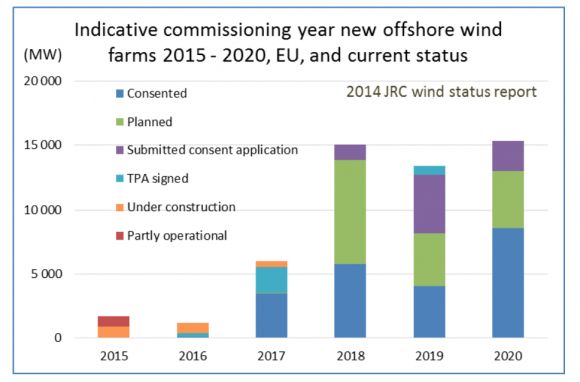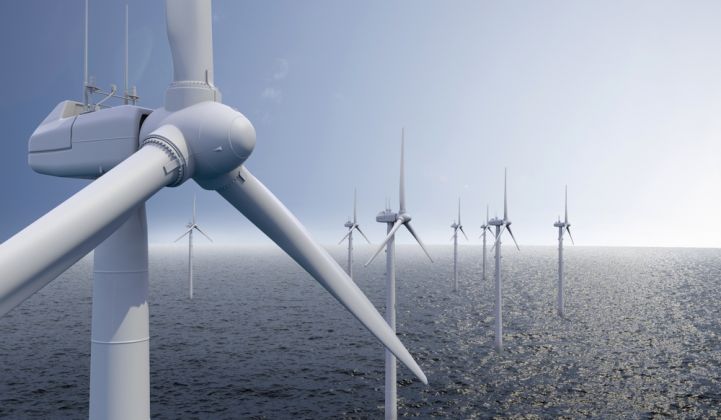Nearly 130 gigawatts of installed wind power accounted for more than 8 percent of Europe’s electricity demand in 2014, according to a new report from the European Commission.
That figure might not seem particularly large, especially since renewable energy accounted for 78 percent of Germany’s power consumption one afternoon in late July.
But the report features some impressive figures on offshore wind projections, a category that Europe continues to dominate.

Offshore wind is expected to boom over the coming years in Europe, building on a record year in 2014, which saw nearly $20 billion in investment, according to Bloomberg New Energy Finance.
The European report lists 15 gigawatts of commissioned offshore wind for 2018 alone, more than double the amount in 2017. That trend continues through 2020, with a cumulative offshore wind addition of nearly 45 gigawatts from 2018 to 2020 if projects proceed as planned.

Other outlooks are not as strong. The European National Renewable Energy Action Plans estimate installations will increase to 38 gigawatts by 2020 -- although that would still overtake new onshore wind power projects. Both France and the Netherlands are already behind on their targets for offshore wind, according to the report. Even so, falling costs have bolstered projections in coming years.
Europe expects to see a 40 percent reduction in costs for offshore wind farms by 2020, a trend that has already started. Better installation techniques alone could cut up to 15 percent of costs, an important factor as increasingly large turbines are installed in deeper offshore areas. Large offshore wind turbines are now pushing 6 MW to 8 MW power ratings and are more than 500 feet tall. The size of offshore projects is also growing.
In 2014, the U.K. approved the world’s largest offshore wind farm, which will have an installed capacity of 1,200 megawatts -- more than double the size of the London Array, the largest offshore wind farm currently in operation.
Europe isn't the only region that expects substantially more production from wind turbines in the future. The U.S. National Renewable Energy Laboratory just released data showing enormous potential for improving capacity factors of onshore wind turbines of different heights.

Turbine technology from 2008 with a 30 percent capacity factor could be installed over about 770,000 square miles (2,000,000 km). Turbine units being developed today that stand at about 450 feet tall, however, could be installed across the same potential area with about a 60 percent capacity factor.
That capacity factor not only rivals the average coal-fired power plant, but also exceeds the capacity factor of the average natural-gas combined cycle plant.



